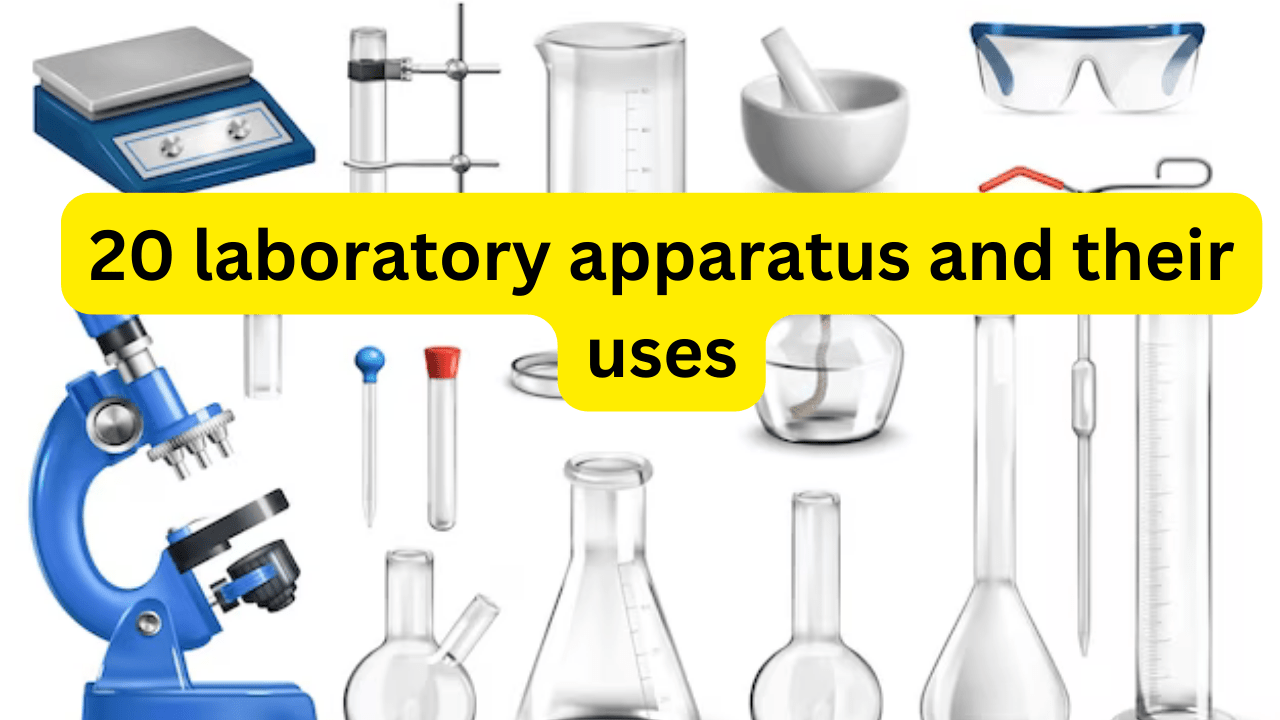Clinical laboratories use a variety of apparatus and equipment to perform diagnostic tests and analyze patient samples.
Here are the list of top 20 laboratory apparatus and their uses.
- Coagulation Analyzer:
- Use: It is used to assess blood clotting function by measuring factors involved in the coagulation cascade.
- Flow Cytometer:
- Use: It is used to analyze and sort individual cells based on their physical and chemical characteristics.
- PCR Machine (Polymerase Chain Reaction):
- Use: It amplify and replicate DNA for various applications, including genetic testing and diagnostics.
- Gas Chromatograph:
- Use: It separate and analyze volatile compounds in blood, urine, or other samples.
- Mass Spectrometer:
- Use: To identify and quantify compounds in a sample by measuring the mass-to-charge ratio of ions.
- Cryostat:
- Use: It is used to cut thin sections of frozen tissue samples for microscopic examination.
- Microplate Reader:
- Use: To measure absorbance or fluorescence in multi-well plates, commonly used in enzyme-linked immunosorbent assays (ELISA).
- Blood Gas Analyzer:
- Use: It is used to measure the partial pressure of gases (oxygen, carbon dioxide) and pH in blood samples.
- DNA Sequencer:
- Use: It determine the order of nucleotides in a DNA molecule, aiding in genetic research and diagnostics.
- Electrolyte Analyzer:
- Use: To measure the concentration of electrolytes (sodium, potassium, chloride) in blood and urine.
- Colony Counter:
- Use: To count and record the number of colonies on agar plates, aiding in the quantification of microbial growth.
- Microscope:
- Use: It examine blood cells, microorganisms, and other specimens at the cellular and molecular level.
- Centrifuge:
- Use: It separate components of blood and other fluids based on their density, such as isolating plasma or serum.
- Hematology Analyzer:
- It Use Automated equipment to analyze blood cell counts, identify abnormalities, and assess overall blood composition.
- Spectrophotometer:
- Use: To measure the absorbance or emission of light by a substance, assisting in various chemical analyses.
- Electrophoresis System:
- Use: It separate molecules, such as DNA, RNA, or proteins, based on their size and charge.
- Chemistry Analyzer:
- Use: To automate the analysis of blood and urine chemistry, measuring various components like electrolytes, enzymes, and metabolites.
- Incubator:
- Use: To cultivate and grow microorganisms, cells, or tissue cultures under controlled temperature and environmental conditions.
- Autoclave:
- Use: To sterilize equipment, glassware, and media by using high-pressure steam.
- pH Meter:
- Use: To measure the acidity or alkalinity of solutions, including blood and other bodily fluids.
These laboratory apparatuses play a crucial role in diagnosing diseases, monitoring patient health, and advancing medical research. Each instrument is designed for specific purposes, contributing to the comprehensive analysis of clinical samples.

1 thought on “20 laboratory apparatus and their uses”